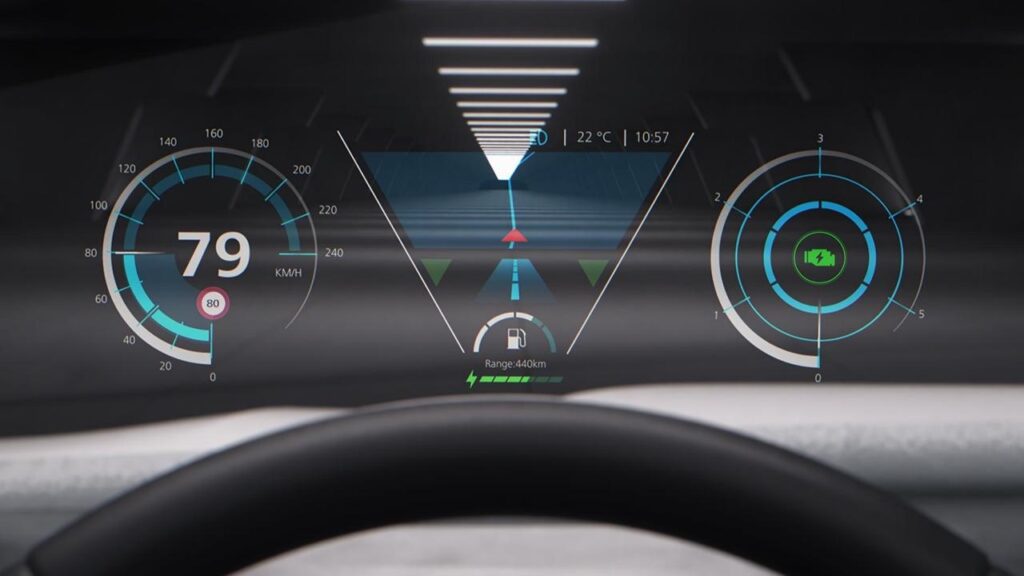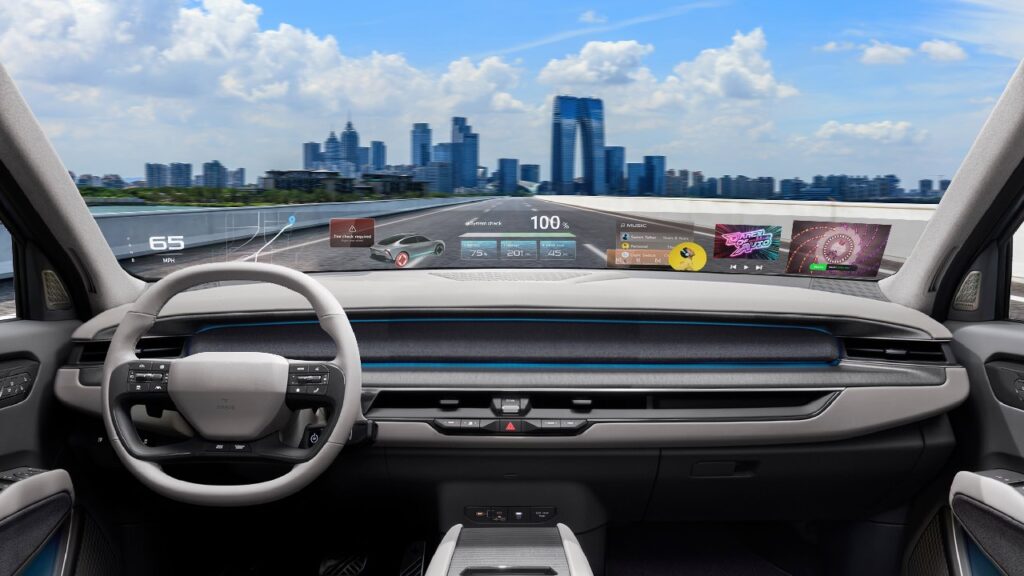Hyundai Mobis signed a Business Cooperation Agreement (BCA) with German company ZEISS for the joint development of the ‘Holographic Windshield Display’.
Futuristic Hyundai EVs are slated to get Holographic Windshield Display technology, a recent press release from Hyundai Mobis confirms. Technology is moving at a fast pace. As HUDs are becoming common in mass-market products, the giants of this field are on the next level. World-renowned German optical company ZEISS will collaborate with Hyundai Mobis to develop this unique windshield with mass production planned for as early as 2027. The agreement was signed at its technical research center in Yongin, Gyeonggi-do, South Korea.

You might also like: Hyundai To Create LFP Battery With 300 Wh/kg Energy Density By 2025
Futuristic Hyundai EVs To Get Holographic Windshield Display
The core of Holographic HUD technology is to clearly display various driving, convenience, and infotainment content in a wide space extending from the driver’s seat to the passenger seat. This transparent display technology enhances driving safety as the driver can view all information at once without significantly moving their line of sight from the road ahead. To accomplish this, a 100 micrometers (about 0.1 mm) thin transparent film will be applied on the windshield.
It will display content from the light emitted by the projector. This is possible courtesy of Transparent Display by Zeiss Holographic Technology based on its precision optical technology. To control the menu, car passengers can use either voice commands or gesture controls. Interestingly, drivers won’t be able to see the things that passengers can. As a result, the passengers can view videos, play games, receive and make video calls, and much more. Clearly, this technology represents existing HUD on steroids.
Global tech market research firm Omdia forecasts the holographic HUD market to grow to 7 million units in 2030. The ultimate aim of this tech is to reduce accidents due to the drivers having to take their eyes off the road to operate touchscreen displays present in modern-day cars. It would be safe to say that most car experts and customers don’t really like the absence of physical buttons in new-age cars. Unfortunately, that is the trend we are heading to. Most cars are inclined towards complete digital estate where even the basic operations might be buried deep in the menus. The futuristic HUD tech aims to remedy that.

You might also like: Waymo To Partner With Hyundai To Deploy Ioniq 5 As New Robo Taxi
Learn Electric Cars Says
Carmakers like Tesla commenced this tradition of minimalist interiors with every function on the large touchscreens. While that looks neat, it is extremely difficult and unsafe to use while driving. In fact, that is why carmakers are constantly struggling with whether to offer physical buttons or not. In such a scenario, using voice commands and a technology like Holographic Windshield Display can emerge as a genuinely effective solution. The only thing that remains to be seen is how much it affects the vision of the driver. However, it is obvious that the developers will take it into consideration as a priority. I shall cover more details about this tech as they emerge.

